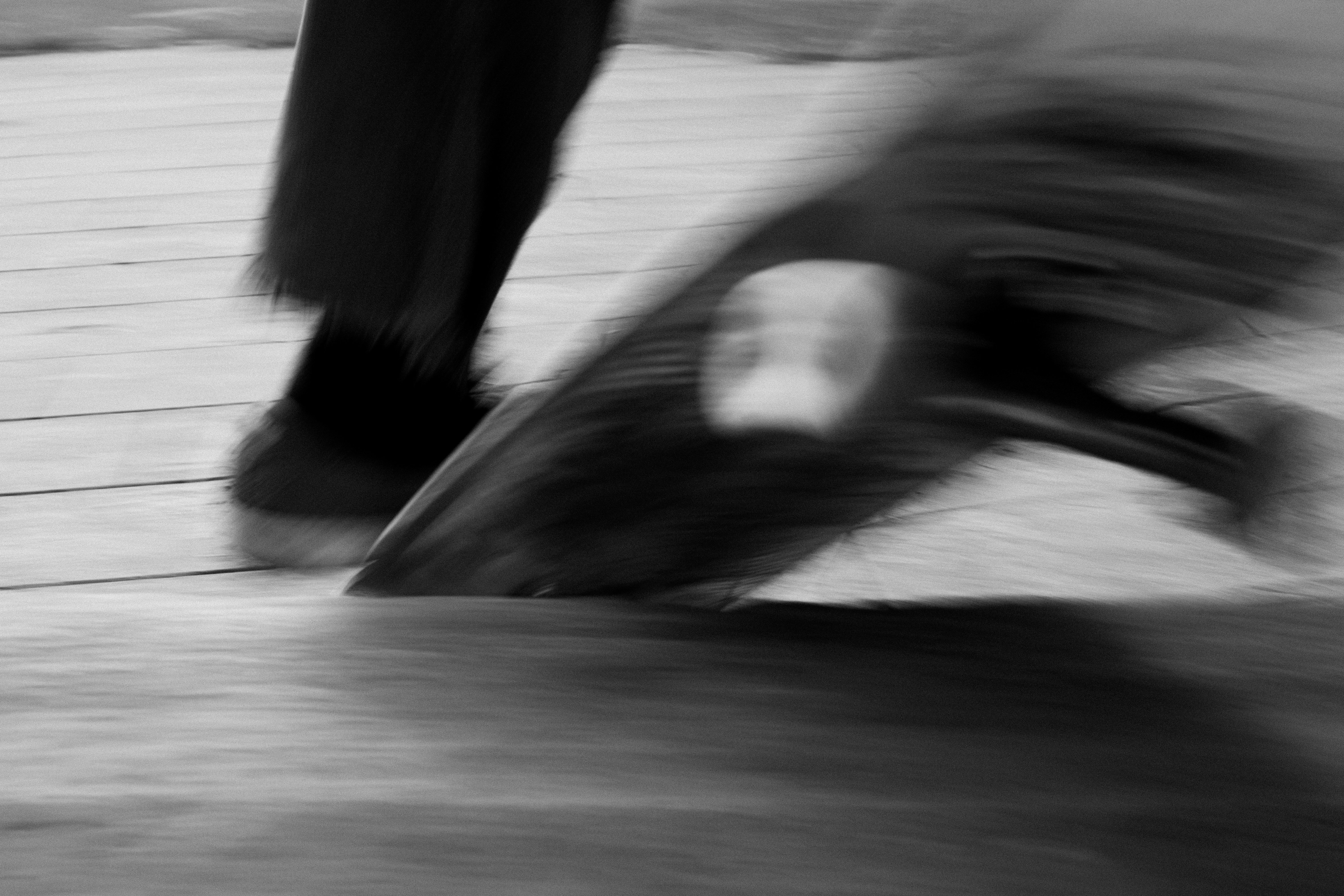Skateboarding is more than just a recreational activity; it’s a dynamic sport that offers a multitude of disciplines to explore. Whether you’re into street, vert, park, or any other discipline, each requires a unique set of skills and techniques. But fear not, because adapting to these different skateboarding disciplines can be an exciting challenge that allows you to push your limits and expand your repertoire. In this article, we’ll explore some tips and tricks to help you navigate the diverse world of skateboarding, allowing you to effortlessly transition between various disciplines and thrive in whichever one captivates you the most. So grab your board, hop on, and let’s explore the thrilling journey of adapting to different skateboarding disciplines!
Understanding different skateboarding disciplines
Skateboarding is a diverse and vibrant sport with various disciplines that cater to different styles and preferences. Each discipline has its own unique characteristics and challenges, providing skaters with endless opportunities for growth and self-expression. The three main skateboarding disciplines are street skateboarding, vert skateboarding, and park skateboarding.
Street skateboarding
Street skateboarding is perhaps the most popular and accessible discipline within the skateboarding community. As the name suggests, street skateboarding focuses on urban environments and utilizes natural obstacles found in the streets such as rails, stairs, ledges, and curbs. Skaters in this discipline are known for their creativity and ability to adapt to their surroundings.
Vert skateboarding
Vert skateboarding, on the other hand, takes place on specially designed vertical ramps, also known as halfpipes, where skaters can perform gravity-defying tricks high above the ground. This discipline emphasizes aerial maneuvers and skillful transitions between ramps. Vert skaters are known for their ability to generate speed and perform complex tricks while maintaining control in the air.
Park skateboarding
Park skateboarding combines elements of both street and vert skateboarding and typically takes place in skateparks. These parks are purpose-built with a variety of obstacles such as ramps, bowls, rails, and banks, allowing skaters to showcase their versatility and creativity. Park skateboarding offers a controlled and safe environment for skaters to practice and master their skills.
Key differences between skateboarding disciplines
While all skateboarding disciplines share a common foundation, there are key differences that set them apart from one another. These differences can be categorized into three main areas: terrain, tricks, and skills required.
Terrain
The terrain is perhaps the most obvious distinction between the different skateboarding disciplines. Street skateboarding relies on the natural environment and urban features for obstacles, while vert skateboarding takes place on specifically designed ramps. Park skateboarding combines elements of both disciplines, utilizing a wide range of obstacles found in skateparks.
Tricks
The tricks performed in each discipline also vary significantly. Street skateboarders often focus on technical and intricate tricks, such as flip tricks and grinds, utilizing the available obstacles in creative ways. Vert skateboarders, on the other hand, emphasize air-based tricks and complex aerial maneuvers. Park skateboarders have the freedom to incorporate both technical street tricks and high-flying vert tricks into their repertoire.
Skills required
Each skateboarding discipline demands different skills from its participants. Street skateboarding requires precise board control, the ability to navigate various terrains, and a keen eye for spotting and utilizing skateable obstacles. Vert skateboarding, on the other hand, places emphasis on generating speed, executing aerial tricks, and maintaining stability in high-speed transitions. Park skateboarding requires a combination of technical skills, versatility in adapting to different obstacles, and the ability to flow smoothly between tricks.
Transitioning between disciplines
As a skateboarder, it is natural to be curious about and even tempted to explore different skateboarding disciplines. Transitioning between disciplines can be an exciting and rewarding experience, allowing you to expand your skills and challenge yourself in new ways. However, it is important to approach this transition with caution and proper preparation.
Assessing your skills
Before venturing into a new discipline, it is vital to assess your current skill level and determine whether you have a solid foundation in skateboarding basics. It is advisable to have a good command of balance, stability, and basic tricks before attempting to transition. Understanding your strengths and weaknesses will help you identify the areas you need to work on and the skills you need to develop further.
Equipment considerations
Different skateboarding disciplines often require specific equipment to optimize performance and ensure safety. For example, street skateboarding typically calls for a more durable skateboard with smaller wheels and harder bushings for better control on rough surfaces. Vert skateboarding may require a skateboard with larger wheels and softer bushings for enhanced stability and smoother transition maneuvers. Park skateboarding generally allows for more flexibility in equipment selection but may benefit from a balanced setup suitable for both street and vert elements.
Adapting to different terrains
Transitioning between skateboarding disciplines involves adapting to different terrains. Skaters accustomed to street skateboarding may need to adjust their approach when confronted with ramps or bowls in the park. Similarly, vert skaters may need to refine their technique when navigating unfamiliar urban environments. Developing the ability to adapt to different terrains and obstacles is essential in transitioning between disciplines and broadening your skateboarding horizons.
Importance of versatility
Embracing different skateboarding disciplines and cultivating versatility as a skateboarder has numerous benefits for personal growth and skill development. Here’s why versatility is highly valued in the skateboarding community:
Expanding your skill set
By exploring different disciplines, you expose yourself to a wider range of tricks, techniques, and challenges. This exposure allows you to expand your skill set and become a more well-rounded skateboarder. Learning tricks from various disciplines can inspire creativity and open up new possibilities for your own unique style of skateboarding.
Challenging yourself
Pushing your boundaries and stepping out of your comfort zone is an essential part of skateboarding. Transitioning between disciplines offers new challenges and keeps your passion for skateboarding alive by continuously stimulating your progress. Each discipline has its own set of demands and learning curves, ensuring that you are always pushing yourself to improve and achieve new levels of mastery.
Adapting to future trends
Skateboarding is an ever-evolving sport, with new trends and styles emerging regularly. By becoming versatile across different disciplines, you can stay ahead of the curve and adapt to these changes effortlessly. The ability to transition between various skateboarding styles ensures that you are well-prepared to embrace and contribute to the future of skateboarding.
Developing fundamental skateboarding skills
Regardless of the discipline you choose to focus on, developing fundamental skateboarding skills is crucial. These skills serve as the building blocks for your progression as a skateboarder and provide a solid foundation for further development. Here are some key fundamental skills:
Balance and stability
Maintaining balance and stability on a skateboard is fundamental to all skateboarding disciplines. Practice standing and rolling in different stances to improve your overall balance. Engage in exercises that challenge your stability, such as balancing on a curb or performing manuals. Developing a strong sense of balance will greatly enhance your performance in any skateboarding discipline.
Ollies and basic tricks
Ollies, the foundation of many skateboard tricks, are essential to master regardless of the discipline. Practice executing ollies in various environments and work on increasing the height and distance of your ollies. Once you have a solid grasp of ollies, start incorporating basic tricks like kickflips, heelflips, and 180-degree rotations into your repertoire.
Board control
Possessing excellent board control is essential for executing tricks with precision and confidence. Spend time familiarizing yourself with your skateboard’s movements and responsiveness. Practice riding switch, carving, and navigating different terrains to improve your overall control. The better you can control your board, the more fluidly you will be able to transition between different skateboarding disciplines.
Training for specific disciplines
Once you have developed a strong foundation in skateboarding basics, you can focus on training for specific disciplines. Here are some tips for training effectively:
Practicing specific tricks
To excel in a particular discipline, practice the specific tricks associated with it. Street skateboarders should focus on mastering technical and creative tricks on various street obstacles. Vert skateboarders should work on perfecting their aerial maneuvers and transitions between ramps. Park skateboarders should practice incorporating both street and vert elements into their runs.
Analyzing professionals in the respective discipline
One of the best ways to improve in any discipline is to study and learn from the professionals. Watch videos of skilled skaters who excel in the specific discipline you are interested in. Observe their techniques, foot placements, and overall style. Analyzing their approach and incorporating elements into your own skating can significantly enhance your performance.
Learning from experienced skaters
Skateboarding is a tight-knit community, and learning from experienced skaters can greatly accelerate your progress. Seek out local skateboarding communities or skateparks where experienced skaters frequent. Ask for tips, advice, and feedback on your skating. Engaging with others who have experience in the discipline you are training for can provide valuable insights and guidance on improving your skills.
Seeking guidance from skateboarding communities
Skateboarding communities are an invaluable resource for skaters looking to adapt to different disciplines. Here are some ways to seek guidance and connect with fellow skateboarders:
Joining local skateboarding groups
Look for local skateboarding groups or clubs in your area and join them. These groups often organize regular skate sessions, allowing you to interact with skaters from various backgrounds and disciplines. Connecting with like-minded individuals can provide motivation, support, and opportunities to learn from others experienced in different skateboarding disciplines.
Attending skate jams and competitions
Skate jams and competitions attract skaters from all disciplines, making them an ideal platform to observe and learn from different styles and approaches. Whether you participate or simply observe, attending these events offers exposure to diverse skateboarding disciplines and opportunities to connect with skaters at all skill levels. The camaraderie and energy of these gatherings can be truly inspiring.
Participating in skateboarding workshops
Many skateboarding workshops and clinics are organized worldwide, offering skaters the chance to learn from professional skateboarders and industry experts. These workshops often cover various disciplines and provide valuable insights, tips, and hands-on training. Participating in these workshops can be an excellent way to gain new knowledge, refine your skills, and network with fellow skateboarders.
In conclusion, understanding the different skateboarding disciplines, their key differences, and how to adapt to them is crucial for skaters looking to expand their horizons. By assessing your skills, considering equipment requirements, and embracing versatility, you can seamlessly transition between disciplines and enhance your skateboarding experience. Developing fundamental skills, training specifically for each discipline, and seeking guidance from skateboarding communities will pave the way for growth, improvement, and endless possibilities in the world of skateboarding. So go out there, explore different disciplines, and enjoy the thrill of skateboarding in all its forms!




